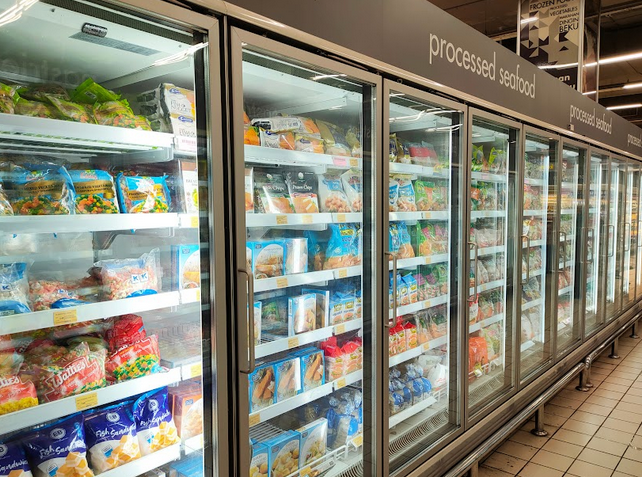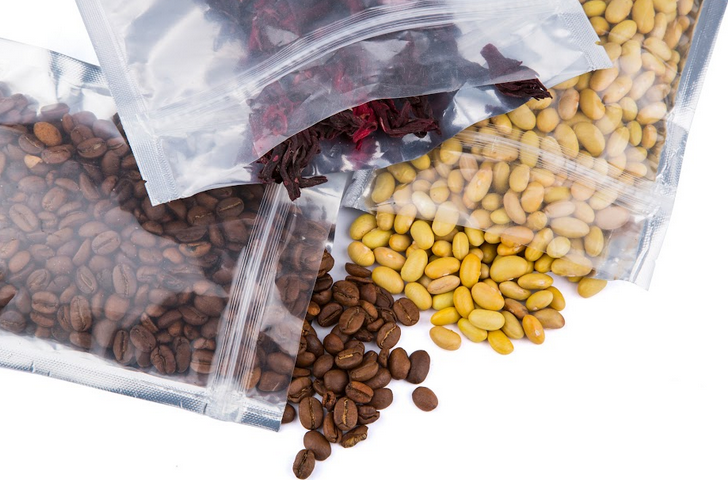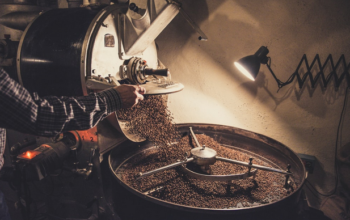Are you an entrepreneur running a food business or considering venturing into the food industry? Do you know that how you store food is crucial to the health of your clients? A food business isn’t just about cooking and selling dishes to consumers. While most people’s attention goes to how tasty your offerings are, much attention should also go to food safety.
Food storage can significantly determine how safe your food is. Improper food storage can lead to food poisoning, which results from bacteria. According to the World Health Organization, approximately 600 million people—nearly 1 in 10—get sick from consuming contaminated food. Unfortunately, 420,000 of them succumb to death every year.
Food poisoning is a risk to public health. Therefore, as a business, you want to store your raw or finished food products safely. In line with this, below are guidelines on long-term food storage you need to follow.
How To Store Food Safely For A Long Time
Food storage involves keeping food products—raw and cooked—in favorable conditions that inhibit the multiplication or entry of microorganisms. Here’s how such conditions can be achieved:
1. Keep Food Cool
Food usually spoils faster in warm temperatures. The most common method to keep it cool is to refrigerate it or place it in freezers. Since you’re running a business, you’ll require a commercial freezer. In this regard, searching for a simple guide on commercial freezers online can come in handy.
You have to adhere to the following basic rules of refrigeration and freezing:
- Immediately Refrigerate Or Freeze Perishable Food
The two-hour rule for food refrigeration stipulates that you should never leave perishable food, such as meat, eggs, poultry, fruits, or seafood, to stay at room temperature for over two hours. In addition, if the temperature is above 90C, perishables only stay for a maximum of one hour, after which they need to be refrigerated or placed in a freezer.
- Avoid Crowding Your Fridge Or Freezer
Overstocking and heavily crowding your fridge or freezer block the air vents, reducing air circulation and compromising energy efficiency. Ultimately, this puts your food at risk of spoiling. On the other hand, an empty fridge will use a lot of energy to keep the interior cool.
You should find the right balance when stocking your fridge or freezer to allow for long-term food storage.
- Observe Proper Temperatures
The Food and Drug Administration (FDA) recommends keeping the temperature at 40C or below for your fridge and 0C for your freezer. An appliance thermometer is the best and most affordable way to check these temperatures.
- Clean Your Fridge Or Freezer Regularly
Always keep your fridge and freezer clean and wipe any spills immediately to reduce bacterial growth. Cleaning also prevents drips from thawing meat, which can spread bacteria from one food to another.
- Cover All Food
Store your food in covered containers and properly sealed bags to avoid spillage and the spread of bacteria. As for eggs, you should avoid putting them on the door and instead store them inside the fridge where temperatures are cooler.
- Don’t Store Hot Food In The Fridge Or Freezer
If you want to store cooked food, never put it in the fridge or freezer while it’s hot. Wait for it to get cold first before storing it. If you want the food to cool faster, separate it into shallow dishes in small portions.
- Keep The Fridge And Freezer Doors Closed
Avoid opening your fridge or freezer, especially if there’s no electricity. A fridge will keep food cool for around four hours if the door remains closed, while a freezer will maintain an adequate temperature for 48 hours.
Observing these measures will ensure that your raw and finished food products are always kept in ideal conditions.

2. Be Keen On Expiry Dates
Always check the expiration dates for all the food products you’ll use. Many manufacturers usually adopt a ‘use-by’ or ‘freeze-by’ date format, after which the food or product may not be favorable to use. The date doesn’t refer to food safety. It mostly means that the taste, texture, or quality might change, but it’s safe for consumption.
Since you’re looking to store your food for a long time, buying food products that also take a long time to expire is advisable. This is why you must also purchase your items from a trustworthy manufacturer.
If you’re buying items that usually lack labels, for example, fruits or cereals, ensure they’re fresh and haven’t stayed in the store for long. Look out for products that have just been brought in, or buy directly from the farm if possible.
3. Store Raw Food Separate From Cooked Food
Separating raw and cooked food reduces the chances of cross-contamination of microorganisms and bacteria. Some raw food such as meat, poultry, and fish contain high amounts of bacteria and are particularly dangerous if they multiply.
Cooking kills most of these microorganisms, and so when you put cooked and raw food together, you increase the chances of re-contamination of the cooked food.
Store raw food at the bottom shelves and cooked food at the top to prevent cross-contamination. Doing will help you prolong the shelf life of your products.
Also, label all your products so your staff members can quickly identify and differentiate cooked from raw food.
4. Always Observe The Shelve Hierarchy For Food Storage
Food products require meticulous placements to ensure quality and safety. Usually, food storage calls for different containers. But if you don’t have enough space for them, you can use the following food storage hierarchy:
- Top shelves: cut food, fruits, or ready-to-eat food that doesn’t require cooking
- Middles shelves: uncut vegetables and fruits
- Bottom shelves: raw food
Some food, such as eggs and shellfish, are an exception to this hierarchy. Always store shellfish separately from other food products since it can cause severe allergic reactions. As for eggs, always store them in their original box er carton to protect them from damage and prevent the absorption of strong smells from other food.
5. Put Your Food in Dark Storage Places
Dark areas are ideal for storing food and vegetables such as cabbages, dry onions, and pumpkins, and root crops like potatoes, yams, and beetroots. Light exposure can depreciate food quality, especially taste, texture, and flavor. For instance, exposing potatoes to bright lights from the kitchen or direct sunlight can change their color from brown to green.
6. Use First-In And First-Out Method
Don’t use any recently purchased products if you still have old ones in your food storage areas. Put the recently purchased items behind the already existing ones. It’ll ensure you use food in a timely manner, plus your clients will enjoy the food while it’s still at its peak quality.
7. Use Cupboard And Pantry Storage For Dry Food
Moisture encourages bacterial growth. It can also make metal packages rust and papers lose their quality. Hence, avoid having storage areas in moist places, such as under the sink or next to it.
Cupboards and pantries are the ideal storage areas for dry food like cereals, canned food, pasta, seasonings, and crackers.
These are the essentials for an effective dry food storeroom:
- Use Storage Containers
Store food in its original containers. Alternatively, you can use plastic, metal, or glass containers with tight lids to prevent the absorption of moisture, which affects the quality of dry food. Tight lids also protect food from insects and rodents, which are bacteria carriers and can cause contamination.
- Ensure Ideal Storage Temperatures
The perfect temperature for a dry storage area ranges from 10C to 15C to prevent canned goods from swelling and spoiling.
- Organize Shelves
Many food businesses aren’t keen on shelving arrangements as long as they have full stock. However, disorganized shelves increase the chances of bacterial contamination, failure to notice deadlines, and even forgetting to use products purchased long ago.
Place your shelves in a way that facilitates easy re-stocking, ensuring every item is nearby. An organized shelf will allow you to implement the ‘first-in-first-out’ method effectively.
- Clean The Pantry And Cupboards
Insects and rodents can quickly infest your cupboards since they feed or breed on cereals, dried fruits, and food stored for a long time. So, regularly clean your cupboards and pantry area, and remove any food particles or crumbs on the shelves. Discard any food that’s already spoilt and can cause harm to public health.
- Six Inches Above The Floor
Never store any food items on the floor. Therefore, your bottom shelf should be six inches or 15cm above the floor. Keeping food on the floor makes them more accessible to moisture, bacteria, and pests.
Storing dry food becomes an easily achievable task by following these tips.
8. Use Mylar Bags
Mylar bags are perfect for any type of short-term or long-term storage. First, they prevent light and oxygen from penetrating the food. Secondly, as much as you can use them to store dry food, you can also use them to store items in the freezer.
They’re also an excellent complement to vacuum sealing, plus they can resist odor, moisture, and tears. Lastly, they have reusable closures, and you can use them for three years if you handle them correctly.
These guidelines allow for long-term food storage, avoiding resource wastage.
Final Note
As food business owner, the long-term food storage guidelines above can help you avert extra expenses that come with improper food storage. Long-term storage will allow you to purchase supplies in bulk, thus saving money. It also reduces the time and effort used for ordering supplies every now and then. Finally, having quality and safe food builds a positive reputation, attracting prospects.
Related Posts












